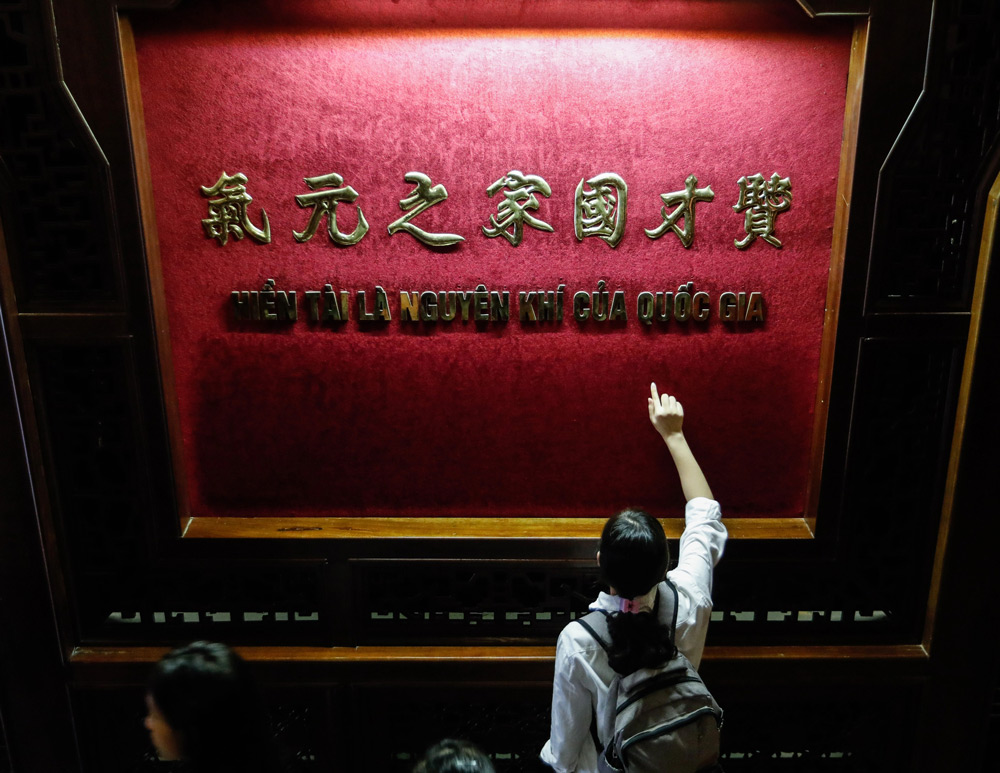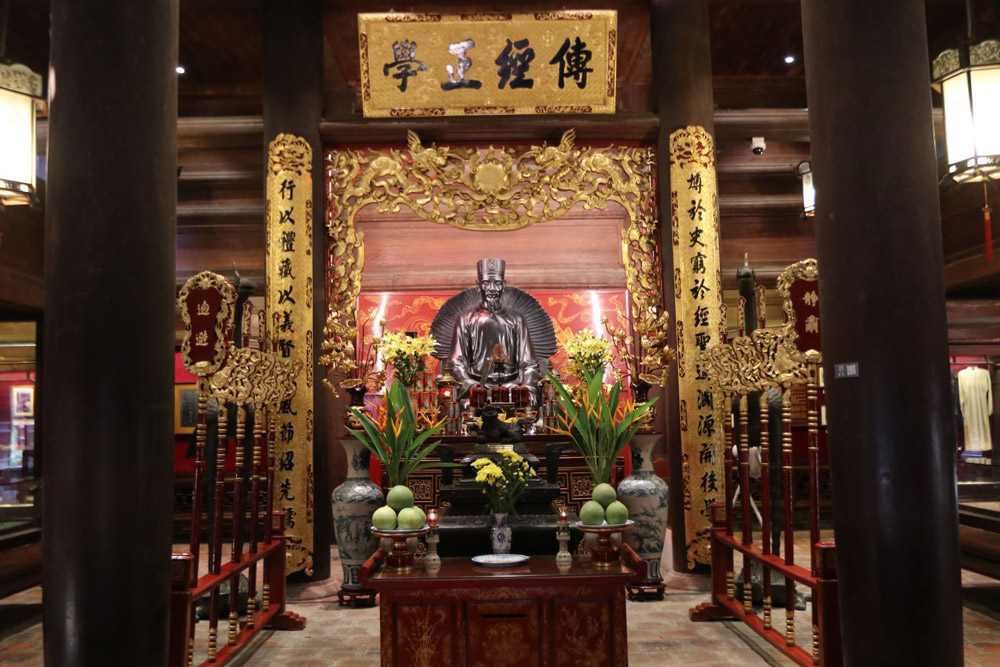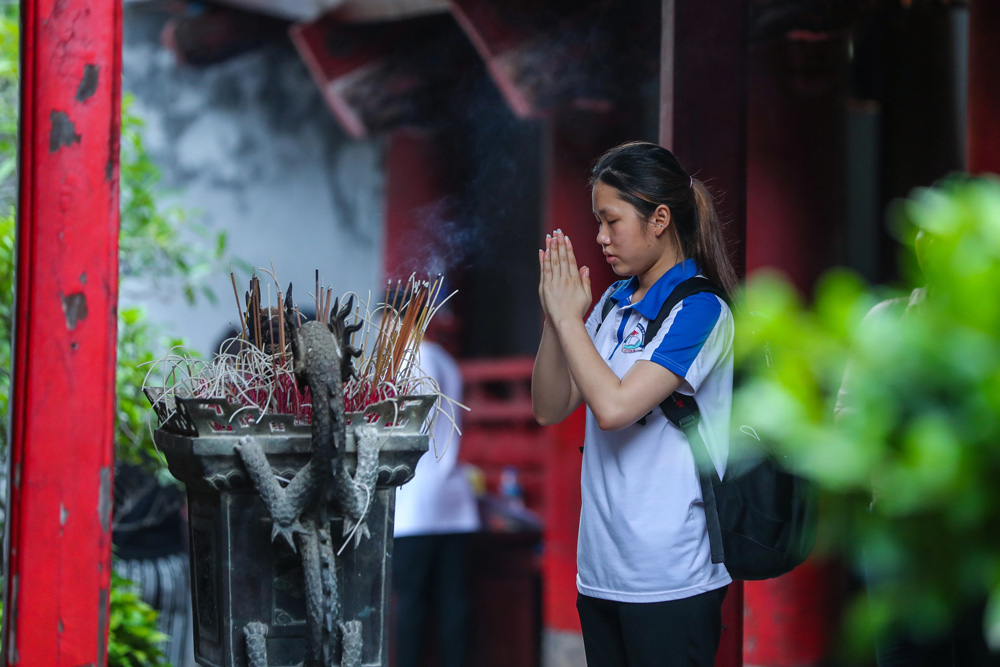Step back in time and immerse yourself in a world of serene courtyards, ancient trees, and exquisite traditional architecture at the Temple of Literature, a true oasis of tranquility in the heart of bustling Hanoi. More than just a beautiful temple, this historic site holds the distinction of being Vietnam's first national university, a place where scholars once studied Confucian principles and the pursuit of knowledge was paramount. Located in central Hanoi, the Temple of Literature Vietnam, known locally as Van Mieu – Quoc Tu Giam, offers a fascinating glimpse into the country's rich cultural heritage and its enduring respect for education. From its meticulously preserved buildings and tranquil gardens to its stelae inscribed with the names of honored scholars, the Temple of Literature is a must-visit destination for anyone seeking a deeper understanding of Vietnam's past. This comprehensive guide will provide you with everything you need to know to plan your visit, including a journey through its captivating history, highlights of what to see, practical information on opening hours and tickets, and insider tips for making the most of your experience. Prepare to be transported to a world of learning, serenity, and architectural beauty at Hanoi's Temple of Literature.

The Temple of Literature, more than just a beautiful architectural complex, is a cornerstone of Vietnamese history and culture. But what is the Temple of Literature known for? Its fame rests on its unique status as Vietnam's first university, its enduring legacy as a symbol of learning, and its captivating blend of history and architecture.
The Temple of Literature's most significant claim to fame is its role as Vietnam's first national university.
The Temple of Literature history spans nearly a thousand years, witnessing the rise and fall of dynasties and the evolution of Vietnamese society.
The Temple of Literature stands as a powerful symbol of Vietnam's enduring respect for education, literature, and Confucian values.
Here are some intriguing Temple of Literature facts that further highlight its significance:
These Temple of Literature facts just add more value to this iconic place. The Temple of Literature stands as a powerful testament to Vietnam's enduring respect for knowledge and its rich cultural heritage. It's a place where the past comes alive, offering visitors a unique opportunity to connect with centuries of scholarship and tradition. It makes the answer to the question of "what is the Temple of Literature known for?" clear: it's known for its profound historical and cultural significance as Vietnam's first university and a lasting symbol of learning.

A visit to the Temple of Literature is a journey through a series of five beautifully landscaped courtyards, each with its own unique atmosphere, architectural features, and historical significance. This carefully planned layout reflects Confucian principles of harmony and order, guiding visitors through a progressive experience that culminates in the heart of the ancient academy.
The Temple of Literature is designed with a linear progression, leading visitors through five distinct courtyards, each separated by walls and gates. This layout creates a sense of journey, with each courtyard offering a new perspective and a deeper understanding of the site's history and purpose.
Your exploration begins at the main entrance gate, leading you into the first courtyard.
The second courtyard is dominated by one of Hanoi's most recognizable symbols.
Khue Van Cac (Constellation of Literature Pavilion): This beautiful two-story pavilion, with its distinctive red-tiled roof and intricate woodwork, is the centerpiece of the second courtyard. It's a masterpiece of Vietnamese architecture and has become an emblem of Hanoi itself. The pavilion's name, "Constellation of Literature," reflects the Temple's dedication to learning and scholarship.
The third courtyard is perhaps the most historically significant, housing treasures that connect to the academic legacy of the Temple of Literature.
The fourth courtyard is the spiritual heart of the Temple of Literature, dedicated to Confucius and his disciples.
The fifth courtyard represents the culmination of the journey through the Temple of Literature, once the site of the Imperial Academy itself.
Exploring the five courtyards of the Temple of Literature is a journey through time, a chance to connect with Vietnam's rich history, its dedication to learning, and its architectural heritage. Each courtyard offers a unique perspective and a deeper understanding of this remarkable site.

To ensure a smooth and rewarding visit to the Temple of Literature, here's a breakdown of essential practical information:
Knowing the Temple of Literature opening hours is crucial for planning your itinerary.
The Temple of Literature entry fee is quite reasonable, making it an accessible attraction for all visitors.
The Temple of Literature location is conveniently situated in central Hanoi.
To fully appreciate the Temple of Literature's architecture, history, and tranquil atmosphere, plan to spend at least 1-2 hours exploring the complex. If you're particularly interested in the details of the exhibits or want to take your time strolling through the courtyards, you could easily spend longer.
To gain a deeper understanding of the Temple's significance, consider joining one of the Temple of Literature tours.
By being prepared with this practical information, you can plan a seamless and enriching visit to the Temple of Literature, allowing you to fully immerse yourself in the history, culture, and beauty of this iconic Hanoi landmark.

With so many attractions vying for your attention in Hanoi, you might be wondering: is the Temple of Literature truly worth a visit? Let's assess its value for different types of travelers:
For those with a passion for history and culture, the Temple of Literature is an undeniable must-see. As Vietnam's first national university and a site with nearly a thousand years of history, it offers an unparalleled glimpse into the country's intellectual and cultural heritage. Exploring its courtyards, examining the Stelae of Doctors, and learning about the scholars who once studied here provides a profound connection to Vietnam's past.
Even if you're not a history buff, the Temple of Literature offers a welcome respite from the hustle and bustle of Hanoi. Its meticulously maintained gardens, tranquil courtyards, and ancient trees create a serene atmosphere that's perfect for quiet contemplation and relaxation. It's a place where you can escape the noise and chaos of the city and find a moment of peace amidst beautiful surroundings.
The Temple of Literature is a photographer's delight, offering a wealth of visually captivating subjects. The traditional Vietnamese architecture, with its curved roofs, intricate details, and harmonious proportions, provides endless opportunities for stunning shots. The courtyards, the Khue Van Cac pavilion, the Well of Heavenly Clarity, and the Stelae of Doctors all offer unique and photogenic perspectives.
Considerations
While the Temple of Literature is generally a rewarding experience, there are a few things to keep in mind:
So, is the Temple of Literature worth visiting? For most travelers, the answer is a resounding yes. Its historical significance, cultural importance, architectural beauty, and tranquil atmosphere make it a unique and enriching experience. It's a place where you can connect with Vietnam's past, appreciate its enduring respect for learning, and find a moment of peace amidst the vibrant energy of Hanoi. However, if you're extremely short on time or have a very low tolerance for crowds, you might want to prioritize other attractions.
Ultimately, the decision depends on your individual interests. But for those who appreciate history, culture, architecture, or simply a peaceful escape, the Temple of Literature is undoubtedly a worthwhile addition to any Hanoi itinerary. It's a place that will leave a lasting impression and deepen your appreciation for Vietnam's rich heritage.
While there isn't a super-strict, formally enforced dress code with guards turning people away at the gate of the Temple of Literature (unlike, say, the Ho Chi Minh Mausoleum), there is an expectation of respectful attire. It's a place of historical and cultural significance, with a strong connection to Confucian values, and your clothing choices should reflect that. It's always better to err on the side of modesty.
Shoulders and Knees Covered: The general guideline is to ensure your shoulders and knees are covered. This applies to both men and women.
Appropriate Attire:
What to Avoid:
Practical Tips:
Dressing respectfully at the Temple of Literature is about showing consideration for Vietnamese culture and the site's historical and spiritual significance. It's a small gesture that demonstrates your understanding and appreciation for the local customs. By following these guidelines, you'll ensure a comfortable and respectful visit, allowing you to fully appreciate the beauty and serenity of the Temple of Literature.

To truly appreciate the beauty, history, and tranquility of the Temple of Literature, here are some tips to enhance your visit:
Choosing the right time to visit can significantly impact your experience.
The Temple of Literature is deeply rooted in Confucian philosophy and its emphasis on education and respect for knowledge.
The Temple of Literature is a place of historical and cultural significance, and respectful behavior is essential.
Photography is generally permitted throughout most of the Temple of Literature, offering ample opportunities to capture its beauty.
The Temple of Literature is conveniently located near other notable attractions in Hanoi, making it easy to create a full and enriching itinerary.
By following these tips, you can plan a visit to the Temple of Literature that is not only enjoyable but also deeply meaningful, allowing you to connect with Vietnam's rich history and cultural heritage.
The Temple of Literature, with its ancient courtyards, majestic gates, and the enduring legacy of Vietnam's first national university, offers a powerful and serene escape from the bustle of modern Hanoi. It's a place where history whispers from every stone, where the pursuit of knowledge is celebrated, and where the beauty of traditional Vietnamese architecture creates an atmosphere of profound peace. More than just a tourist attraction, the Temple of Literature provides a window into the soul of Vietnam, a testament to its enduring respect for learning and its rich cultural heritage. We encourage you to step through its gates, explore its tranquil courtyards, and immerse yourself in the centuries of history that resonate within its walls. A visit to this iconic Hanoi landmark is an essential step in gaining a deeper understanding of Vietnam's past and its enduring values.
To enhance your exploration of the Temple of Literature and ensure your entire Vietnam journey is unforgettable, consider the expertise of Asia Mystika. We specialize in creating tailor-made experiences that go beyond the ordinary, crafting itineraries that are perfectly aligned with your interests and passions. Our local experts possess an intimate knowledge of Vietnam, unlocking hidden gems and authentic cultural encounters that will enrich your adventure. With Asia Mystika, you can travel with confidence, knowing that every detail is meticulously handled by a trustworthy team dedicated to your satisfaction and enjoyment. And our commitment to value for money ensures that your investment yields an exceptional and enriching travel experience.
Ready to delve into the history and tranquility of the Temple of Literature and discover the many other wonders of Vietnam? Explore our inspiring range of Vietnam tour packages and let us help you design your perfect itinerary. We invite you to share your own Temple of Literature experiences, reflections, or any questions you may have in the comments below. Let your journey into the heart of Vietnam's cultural heritage begin!
